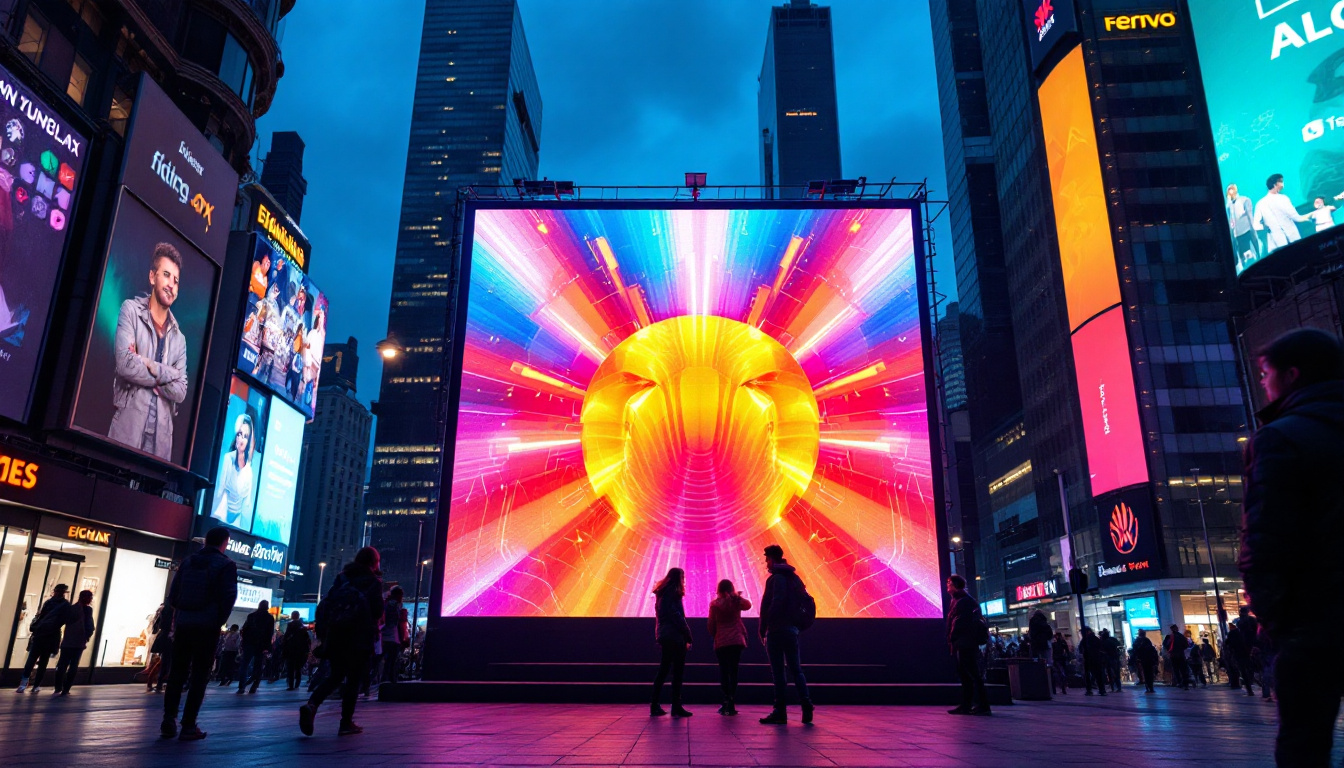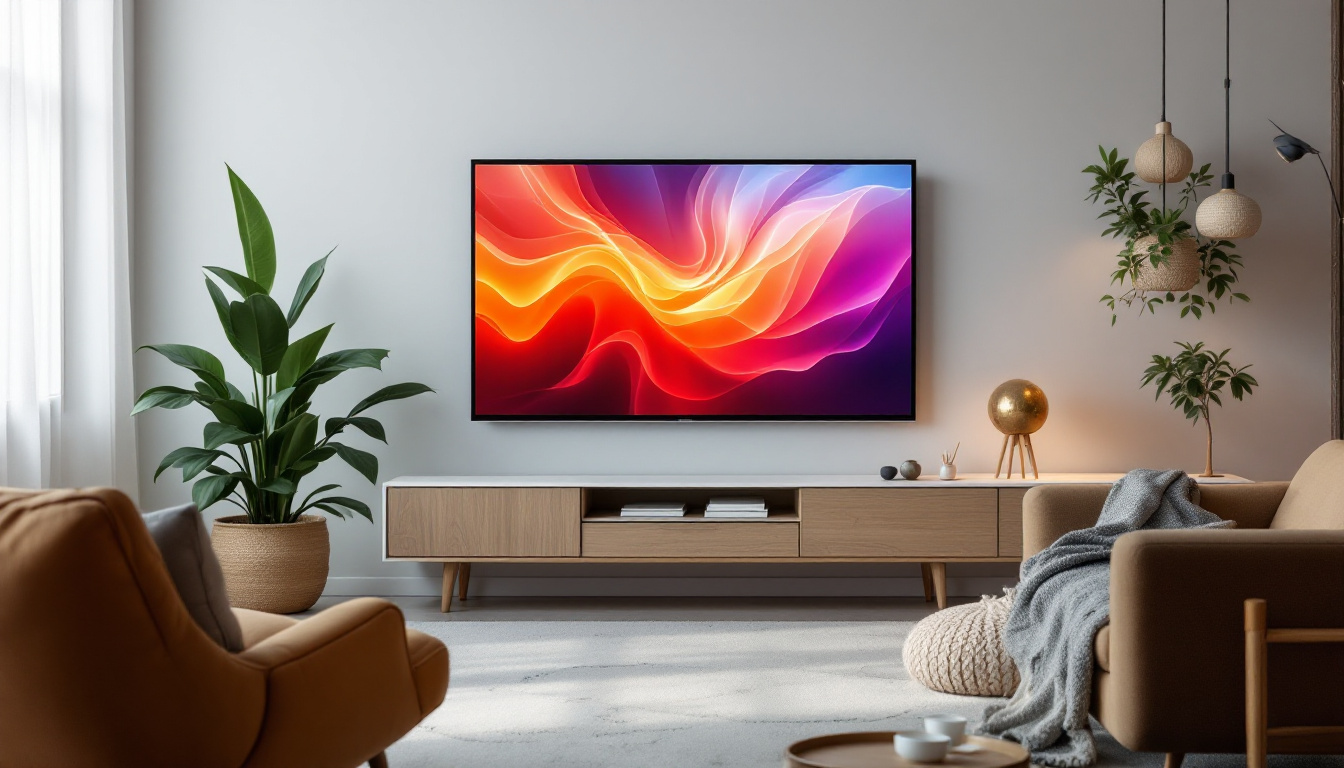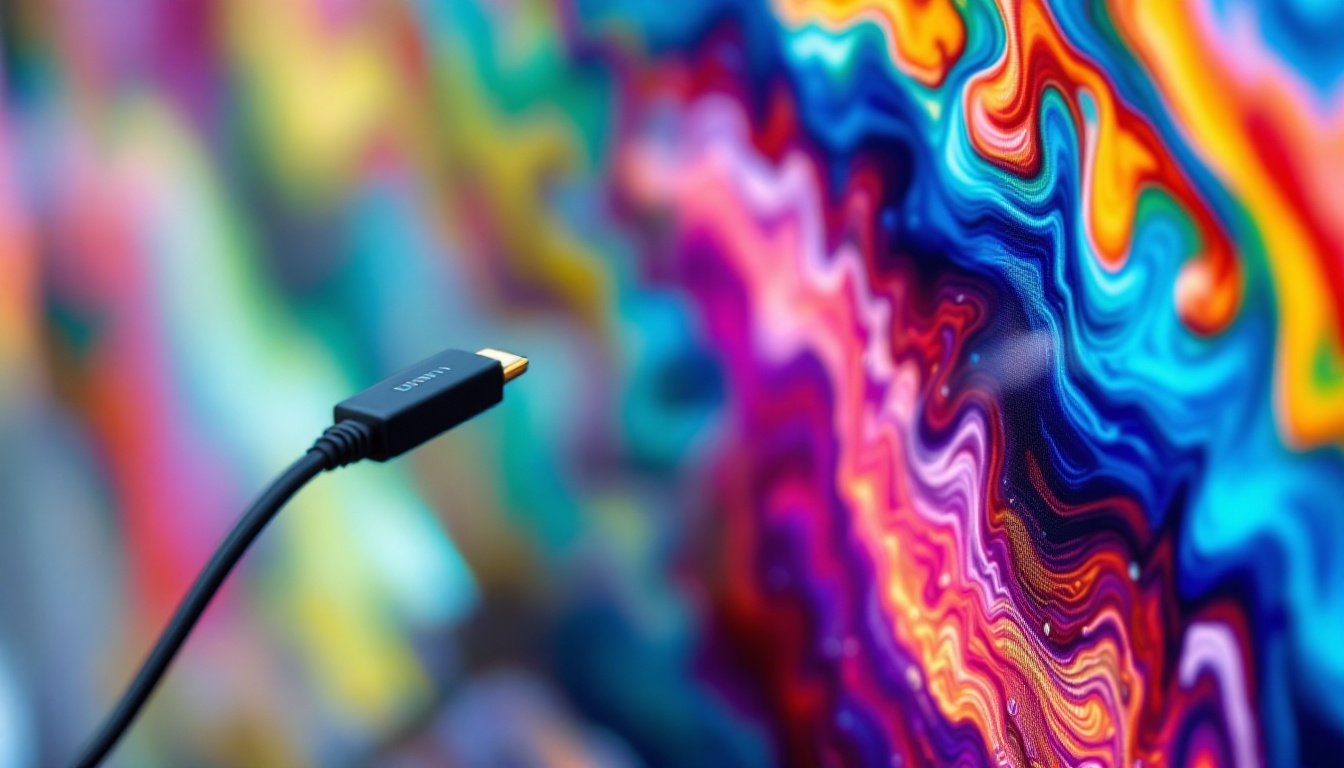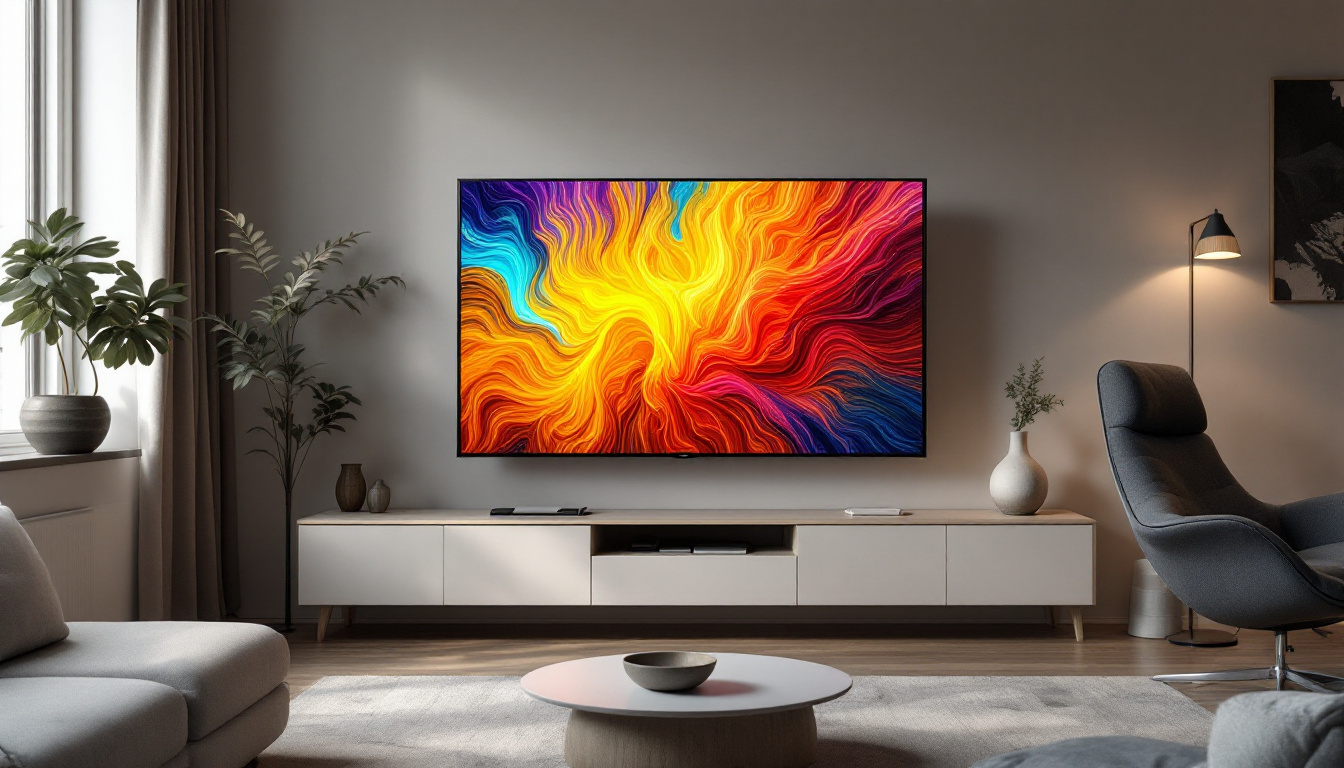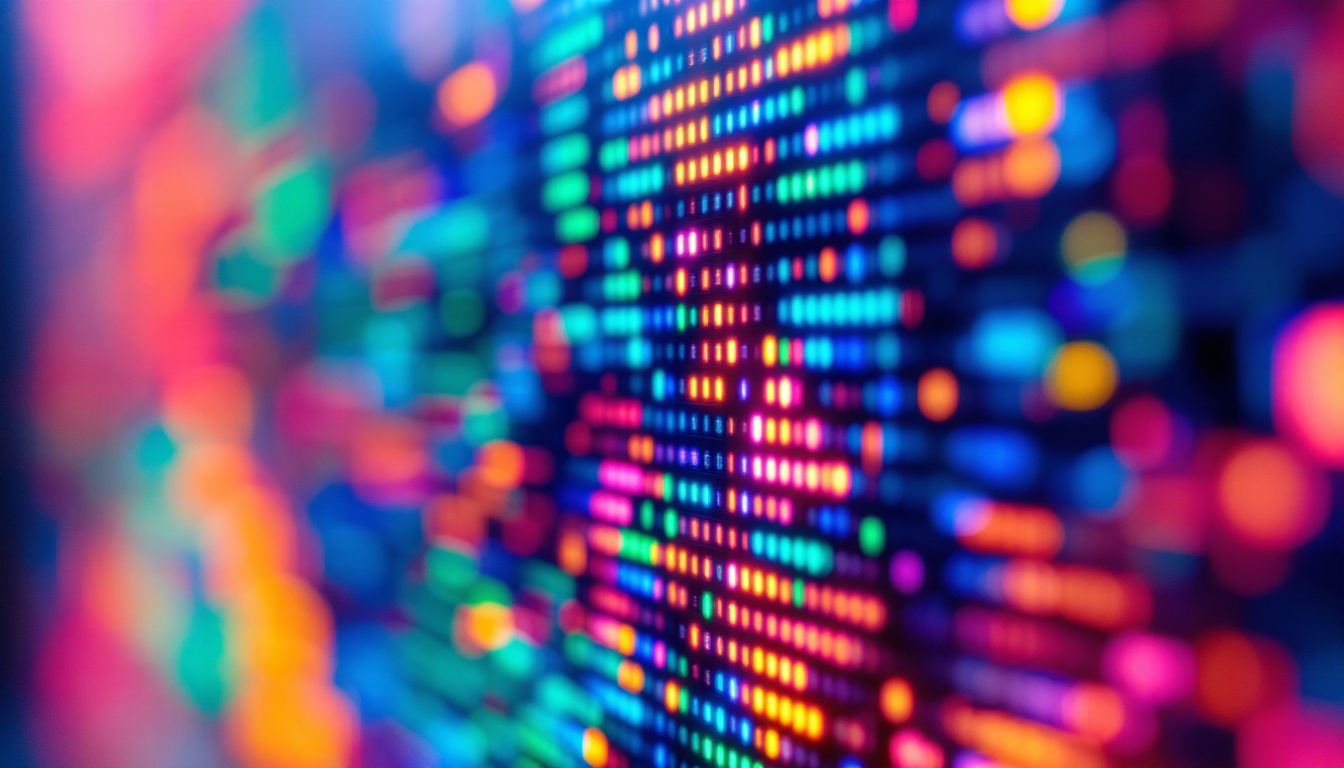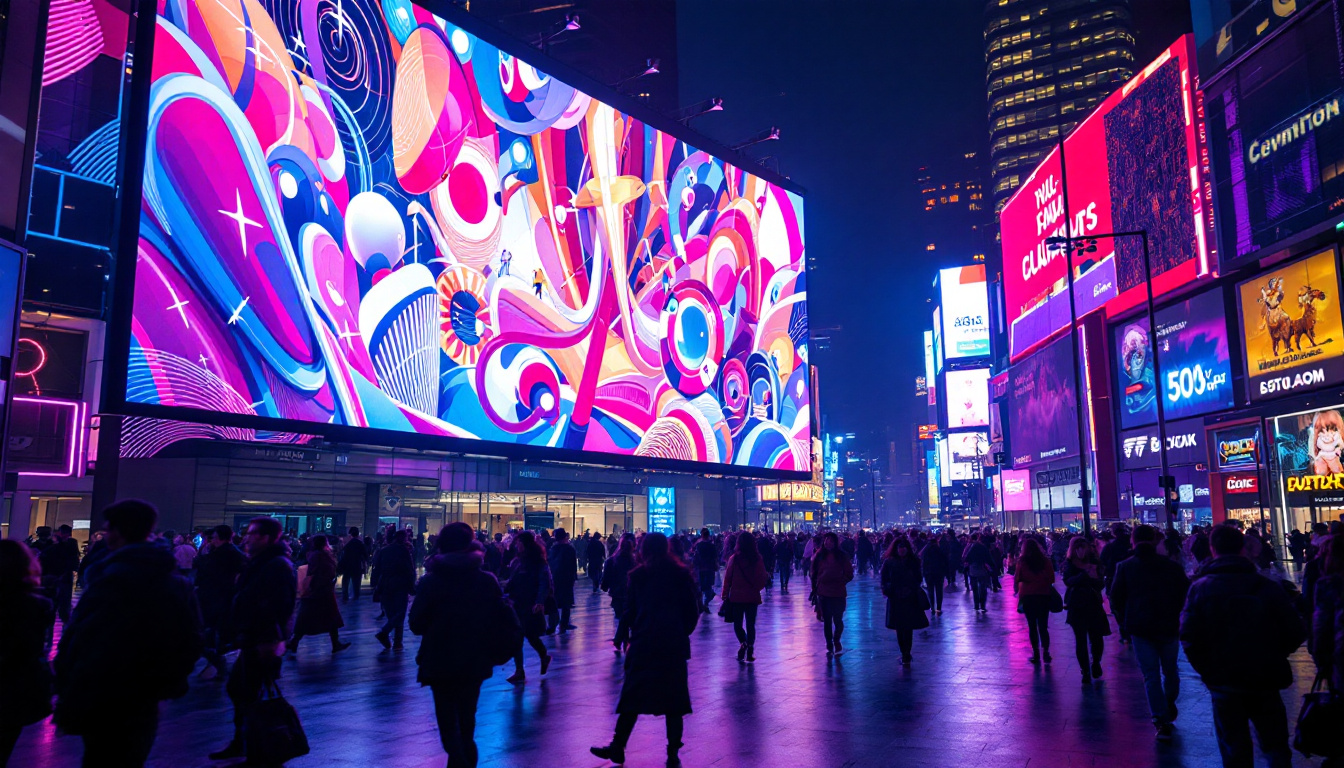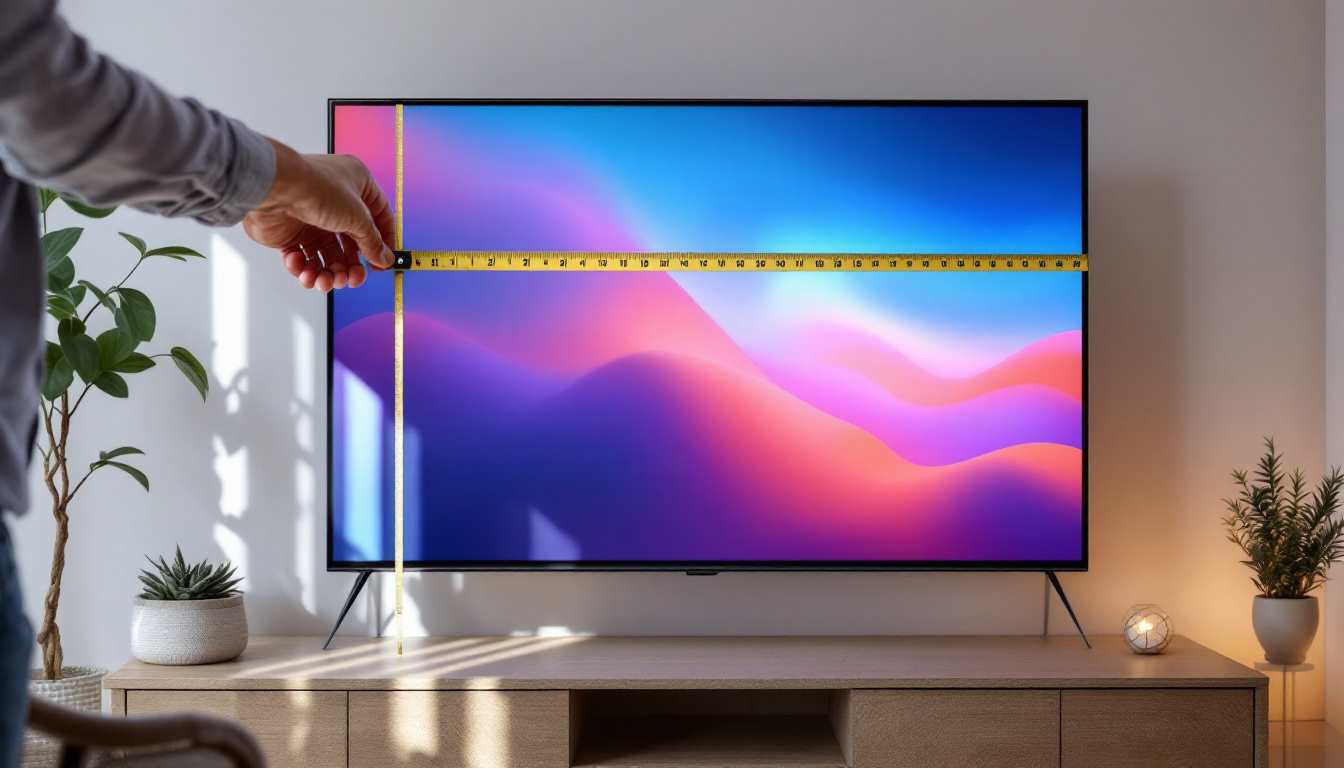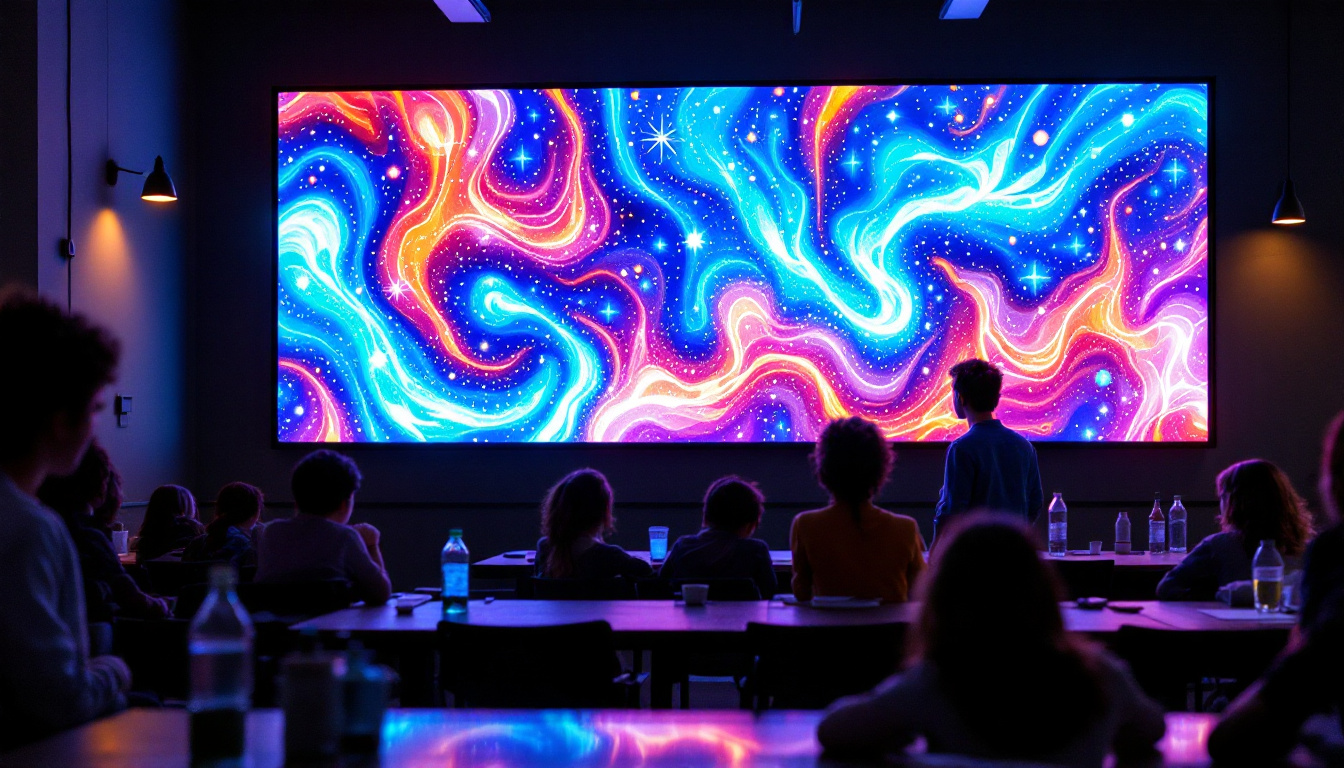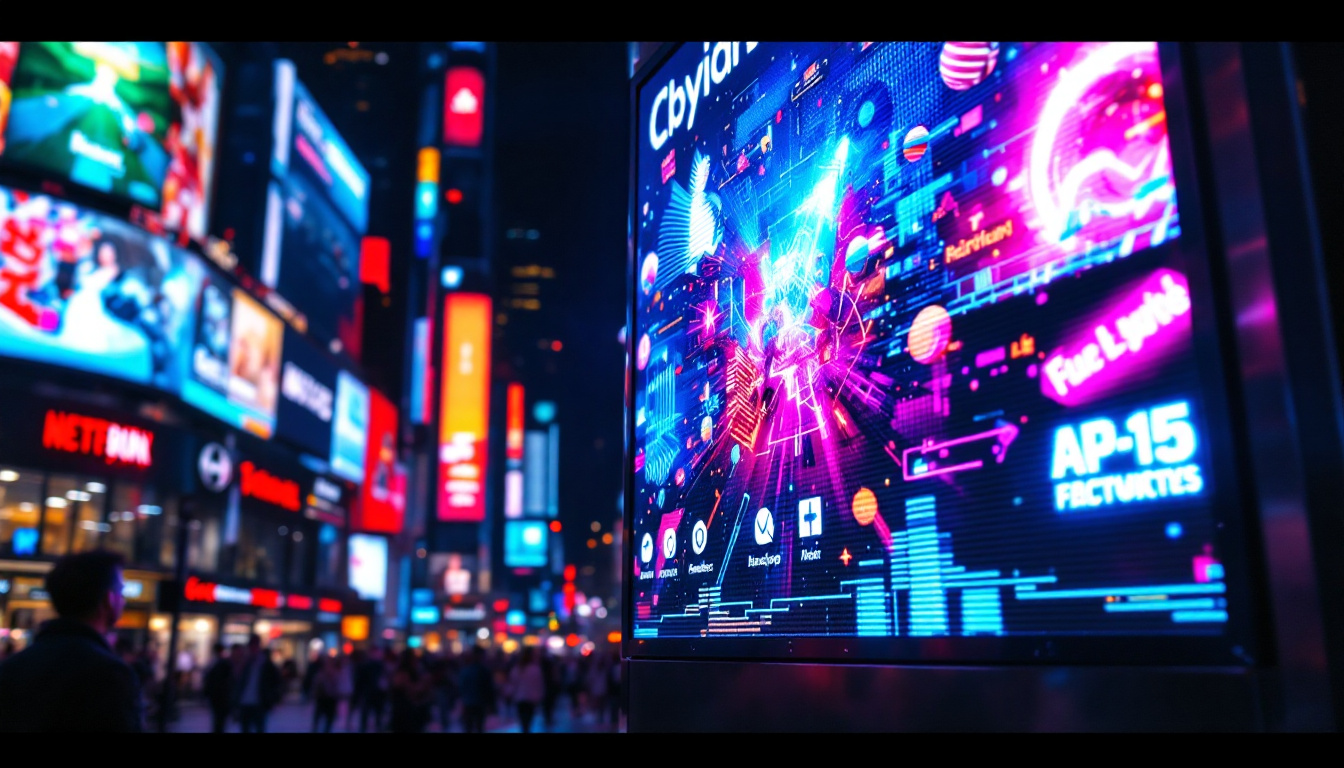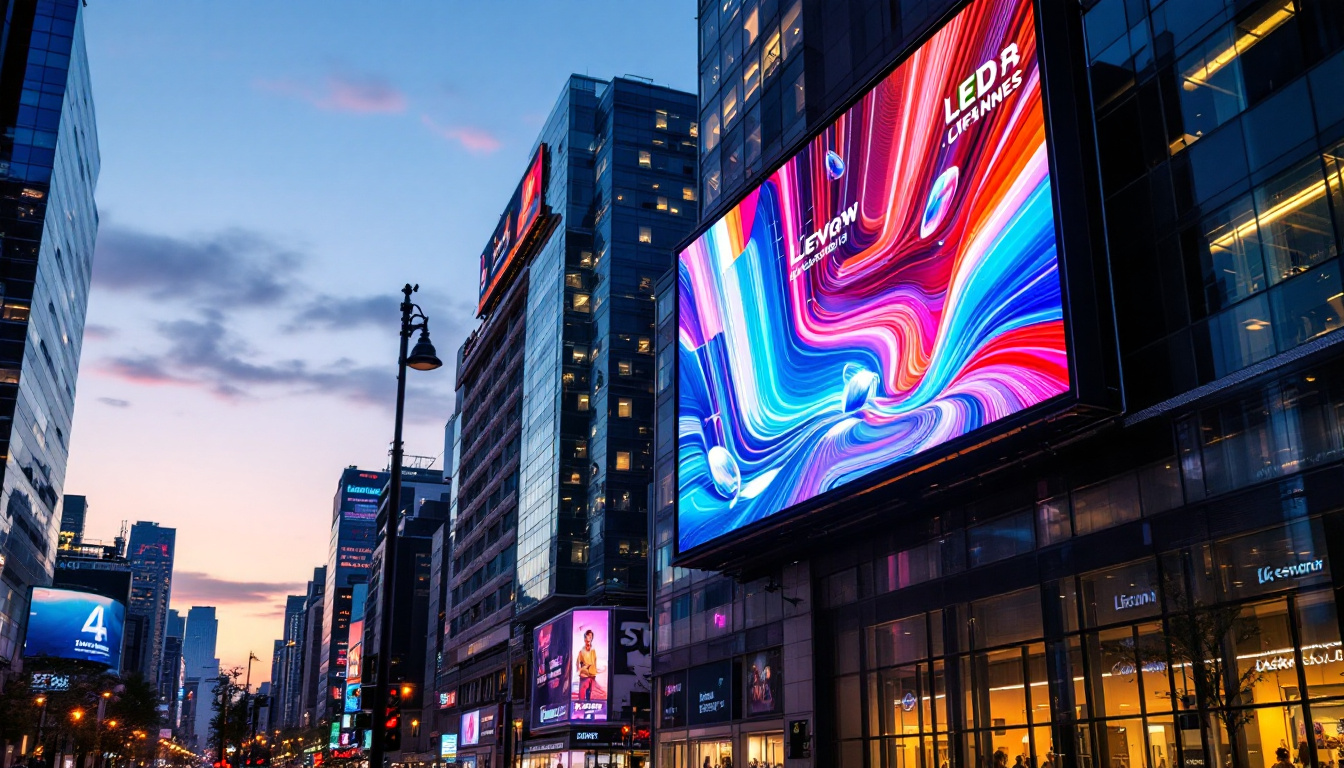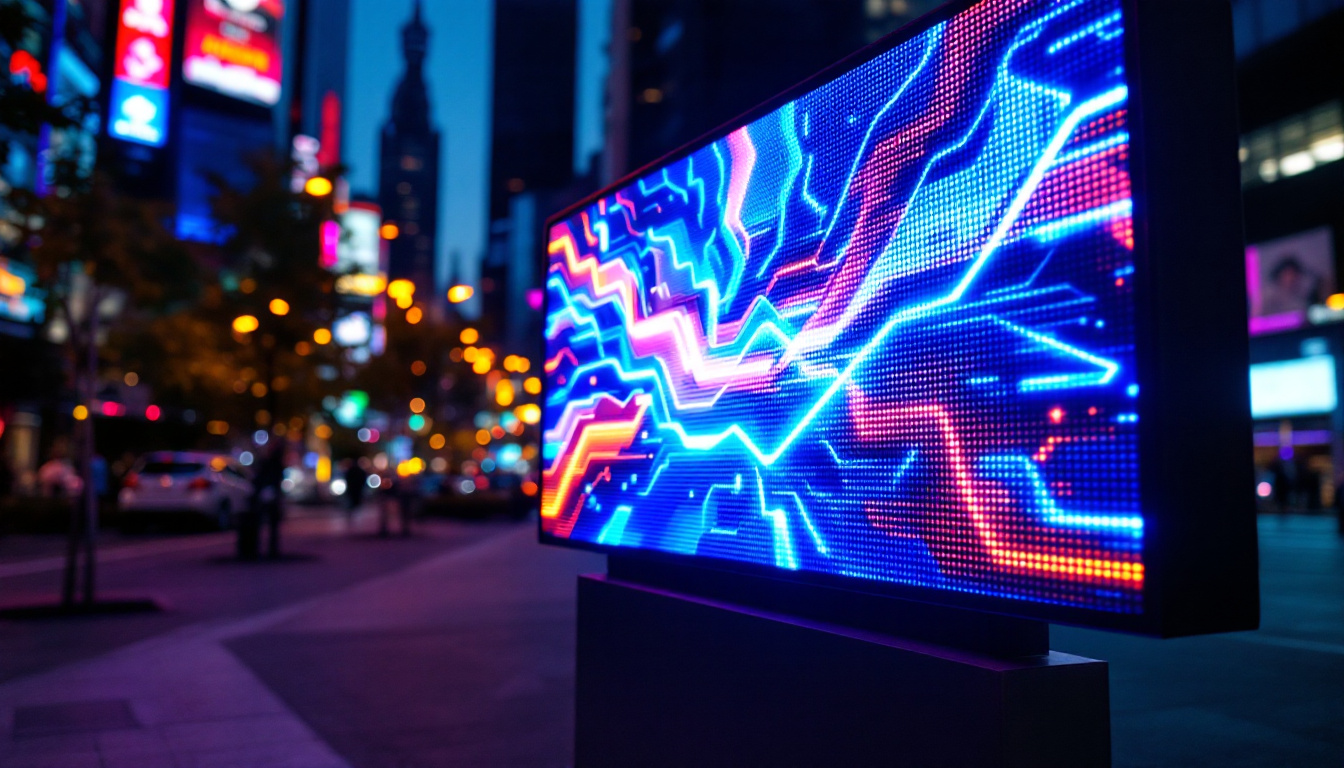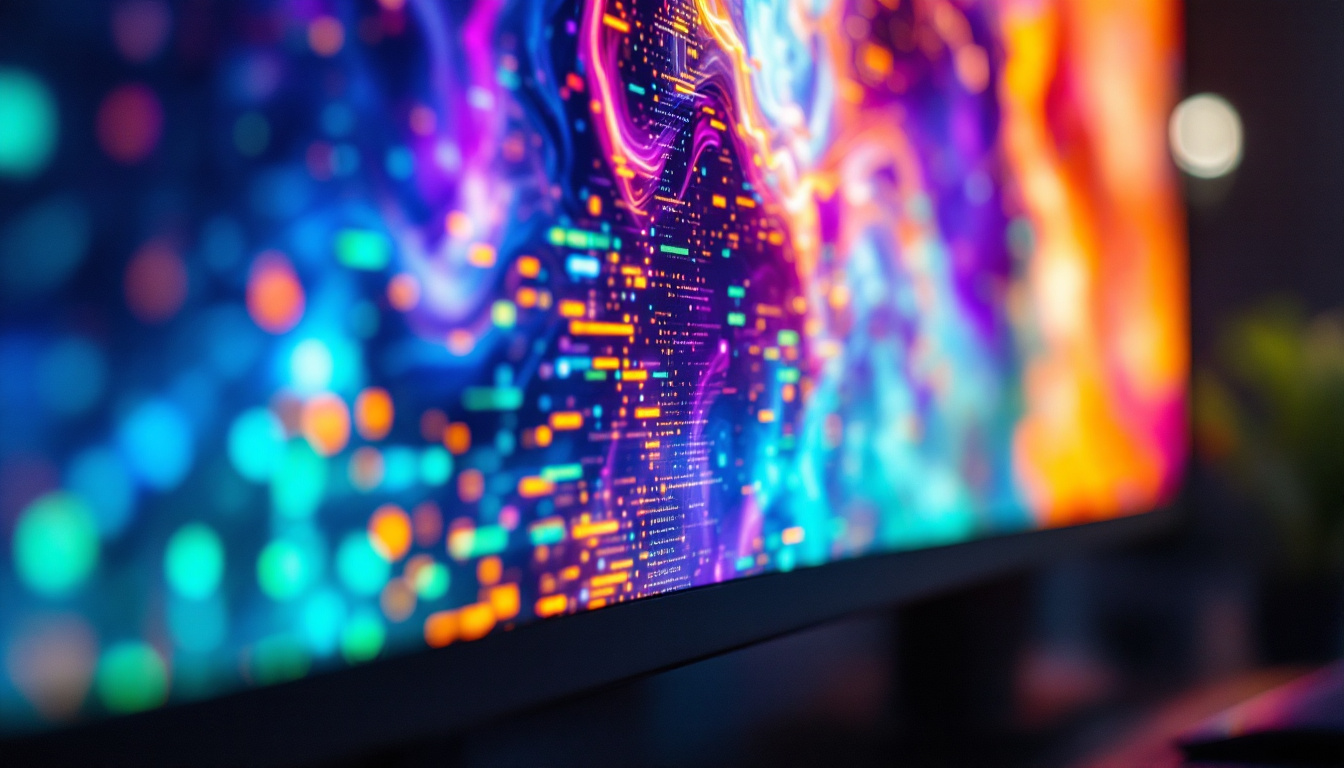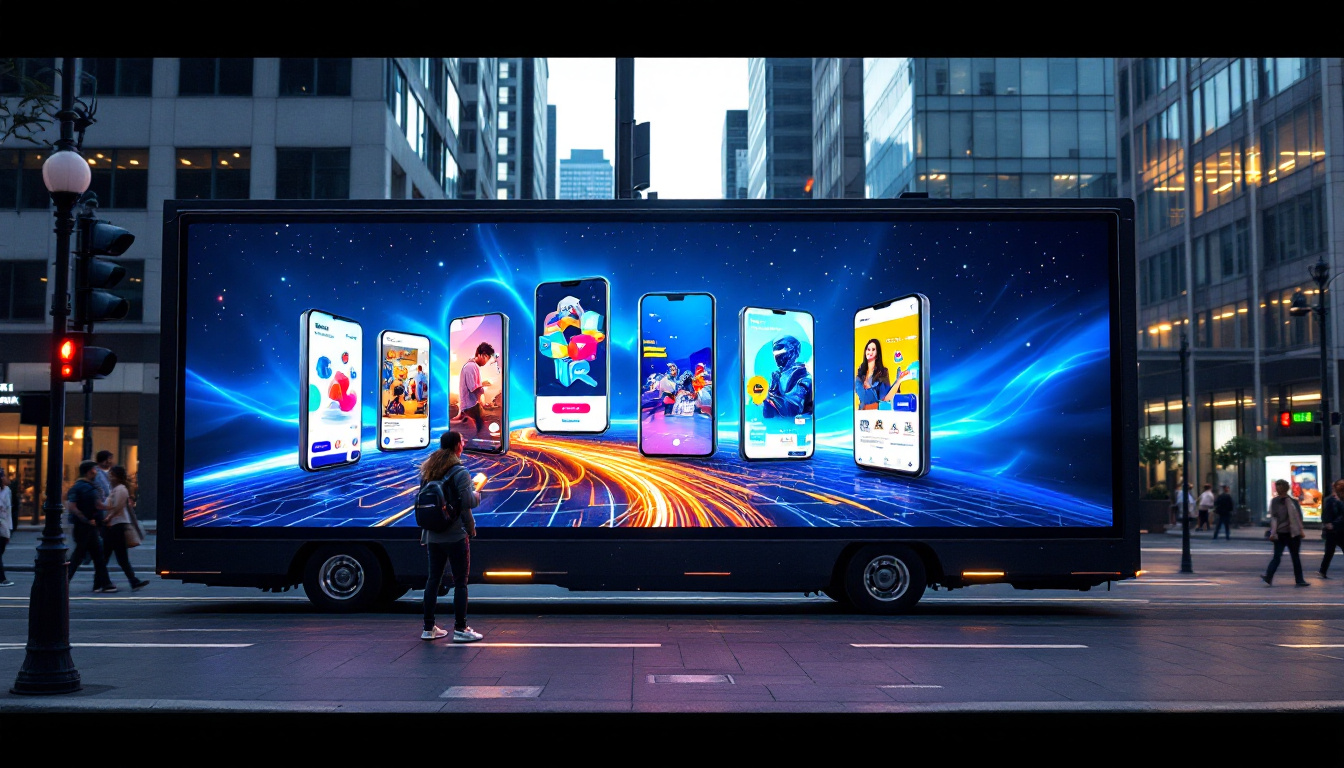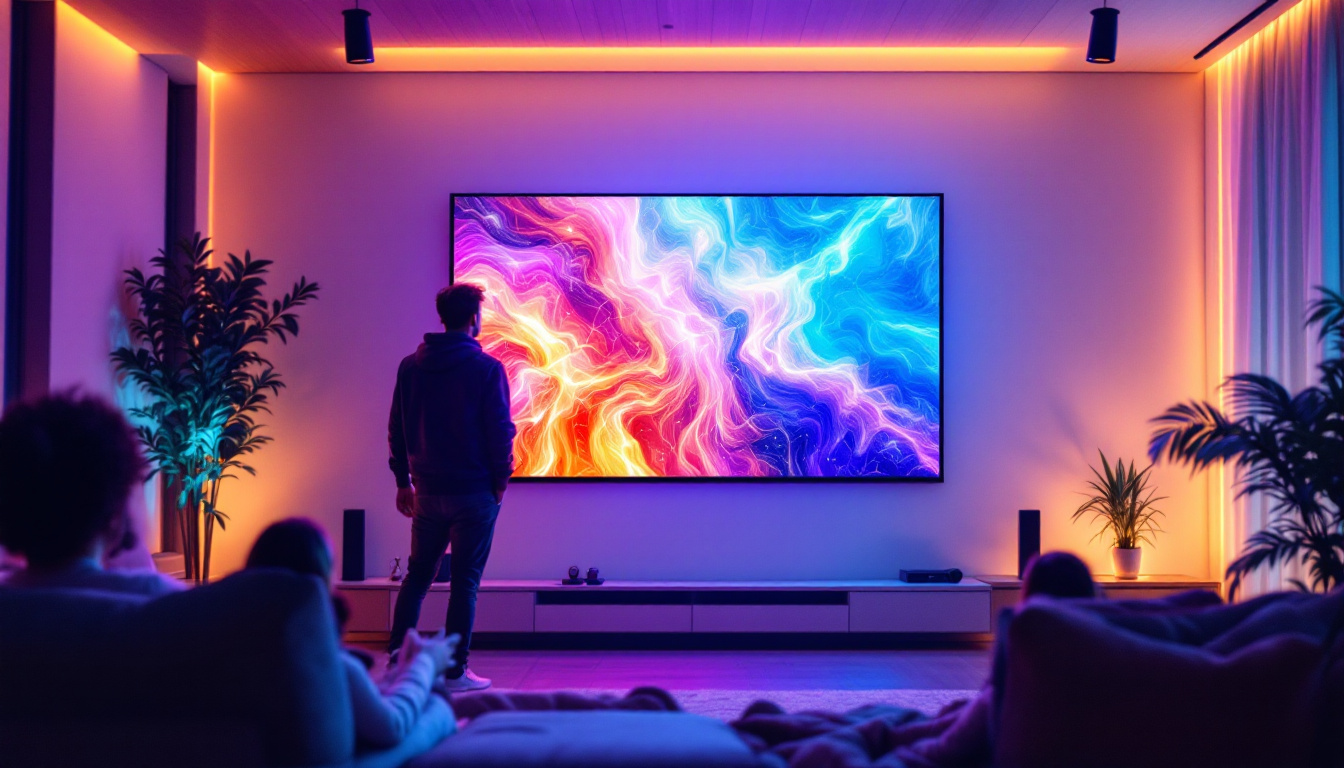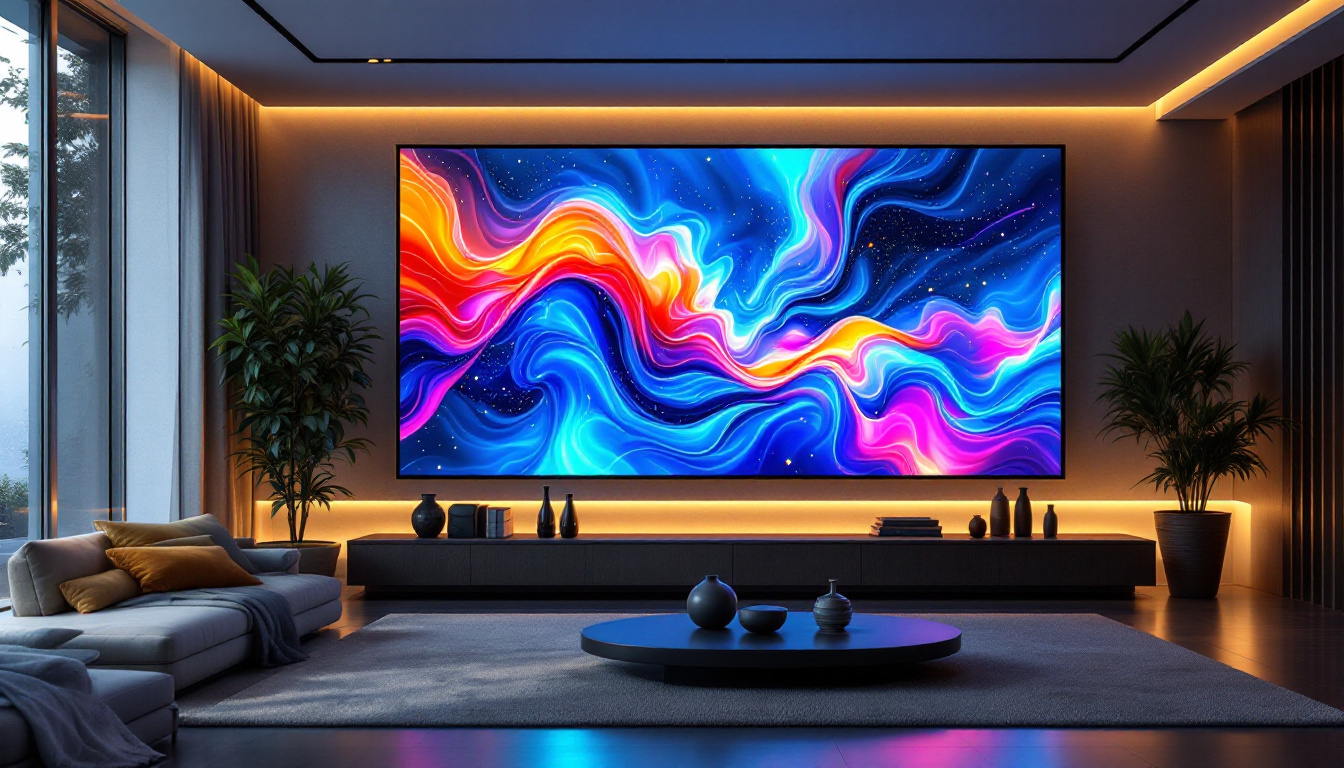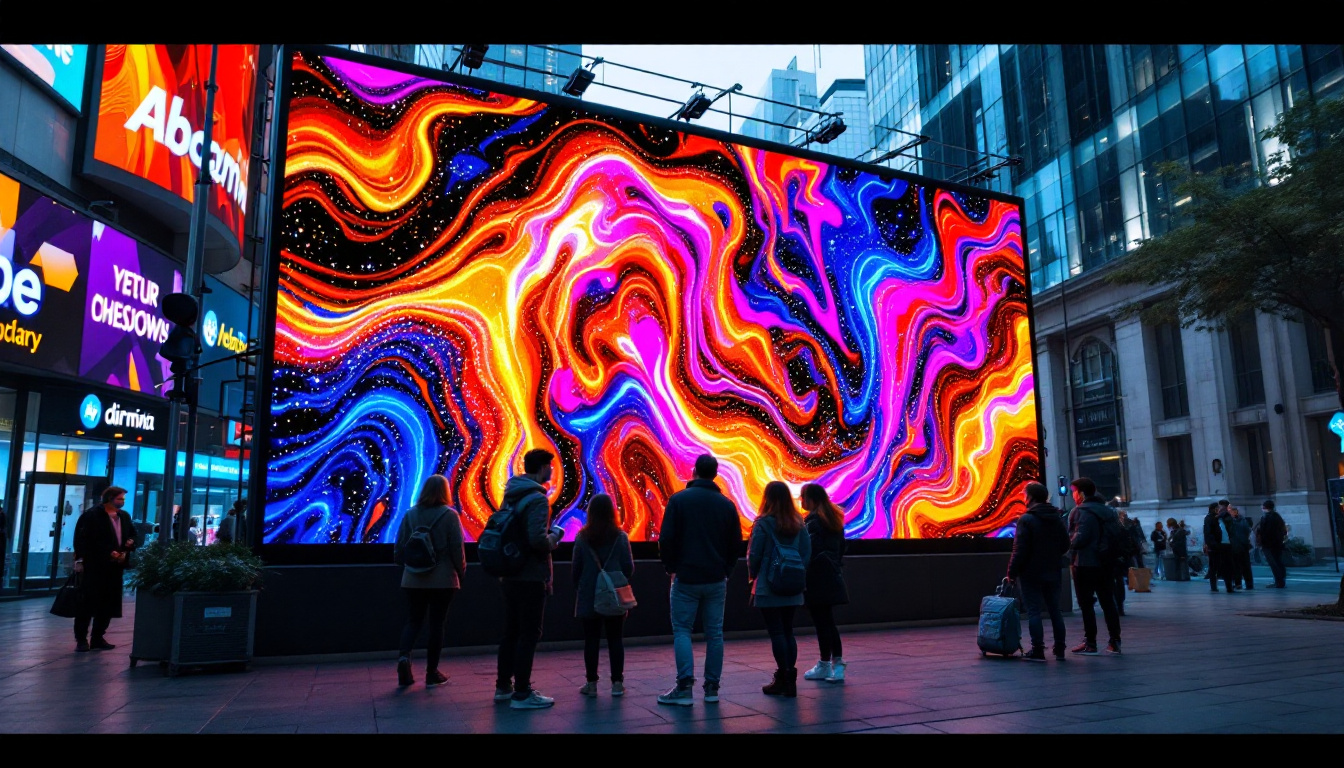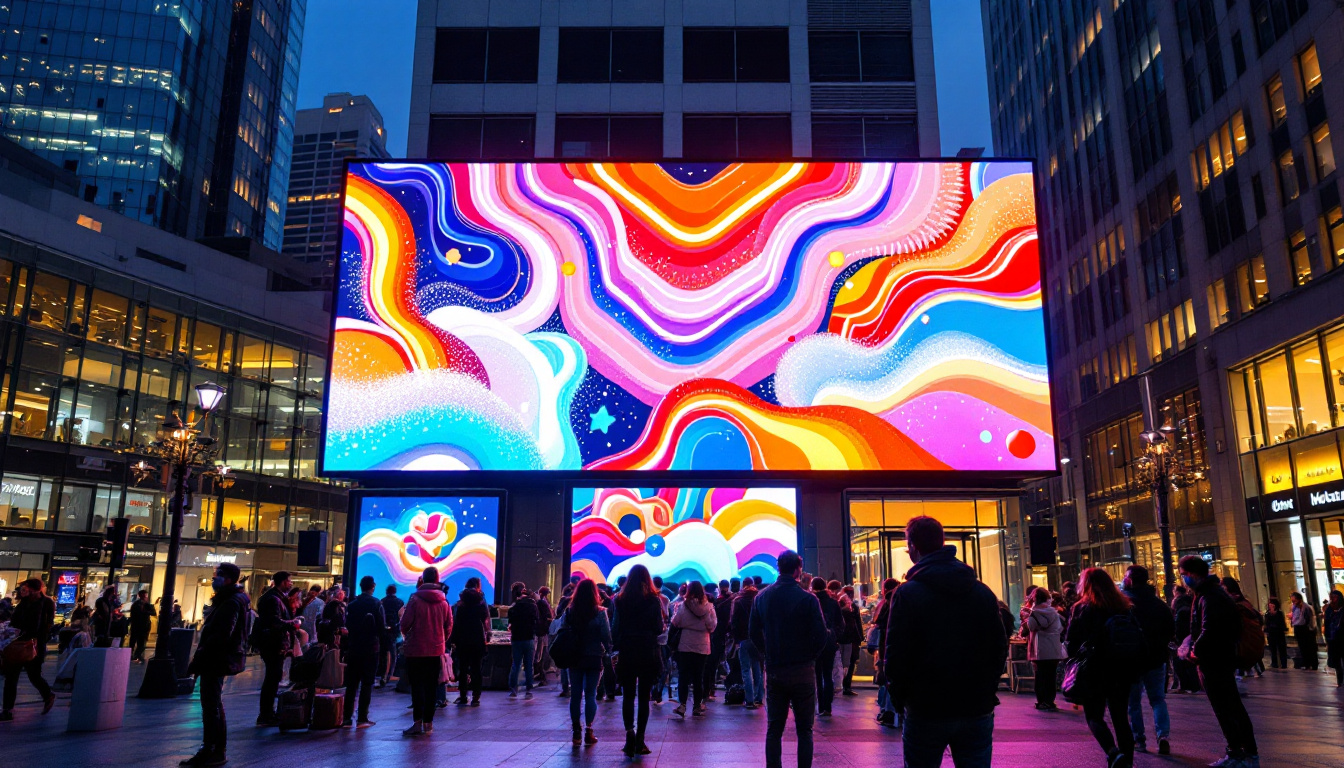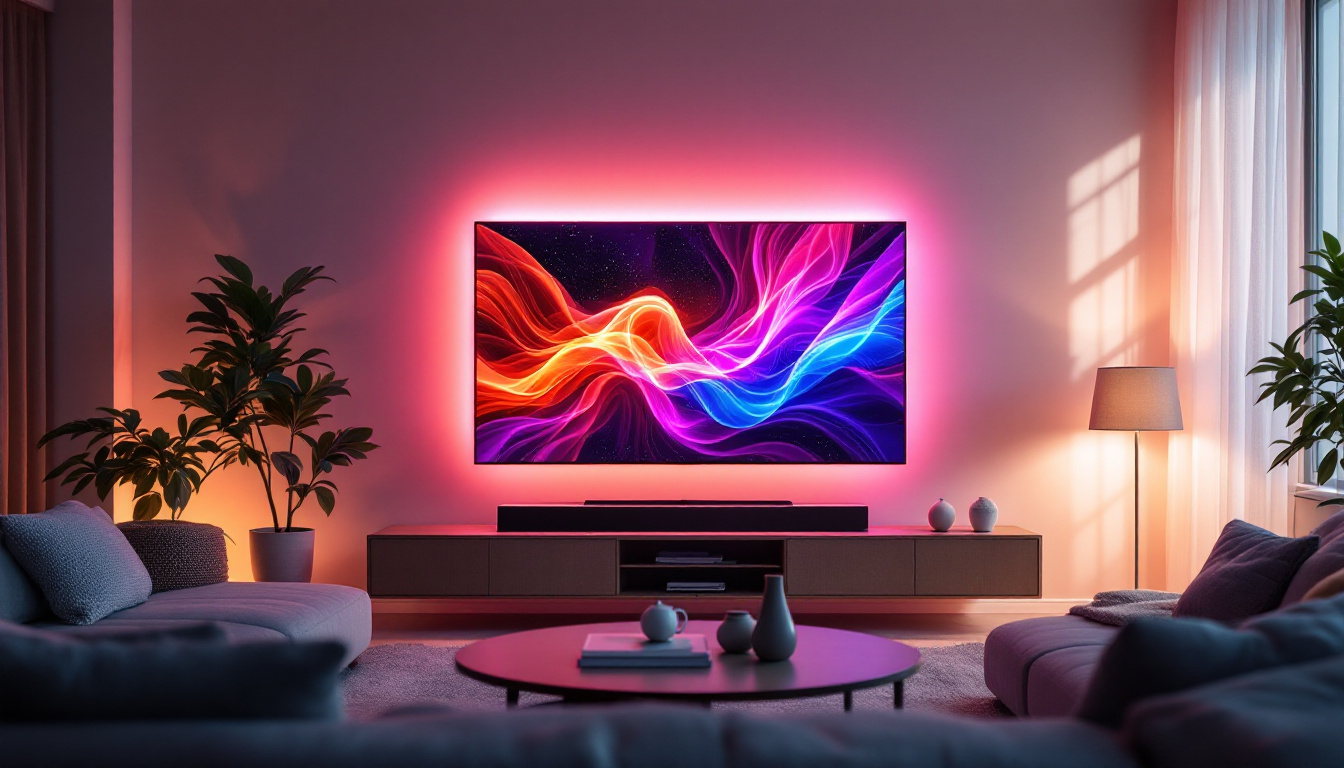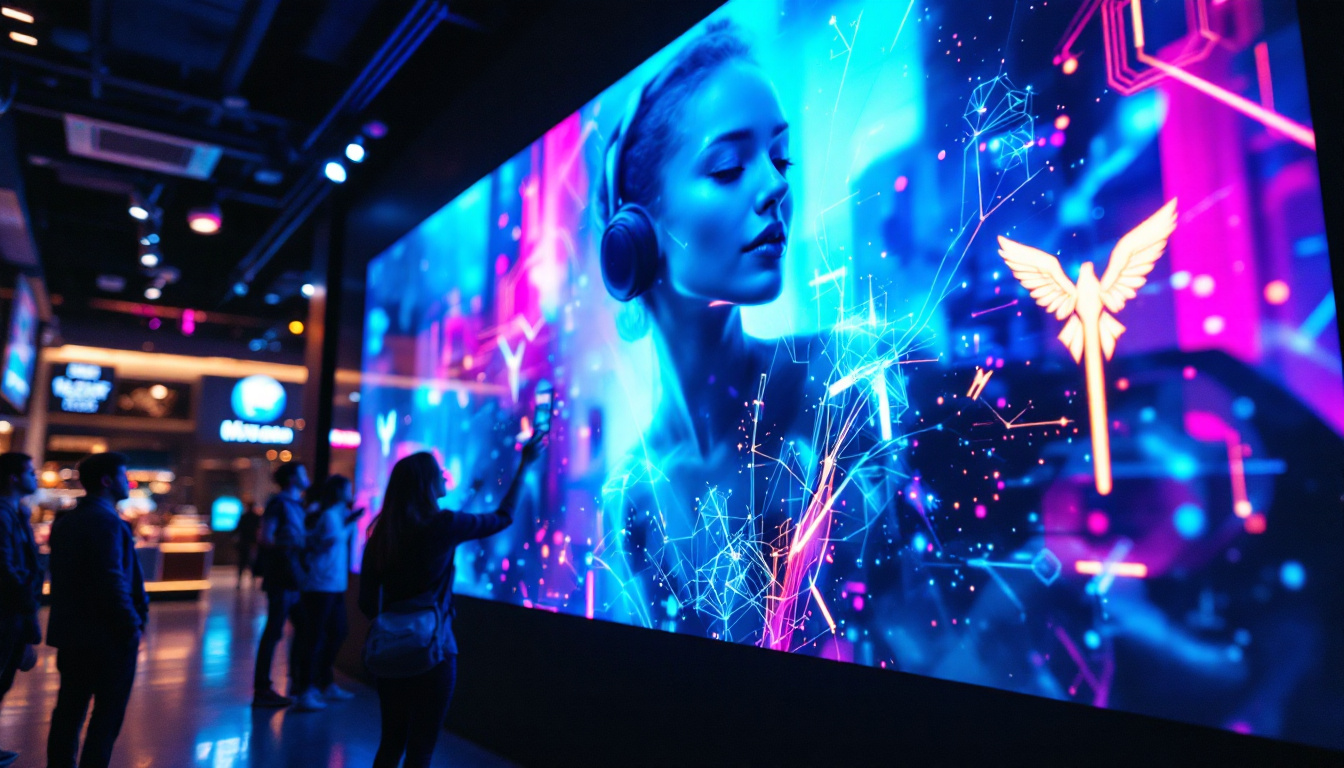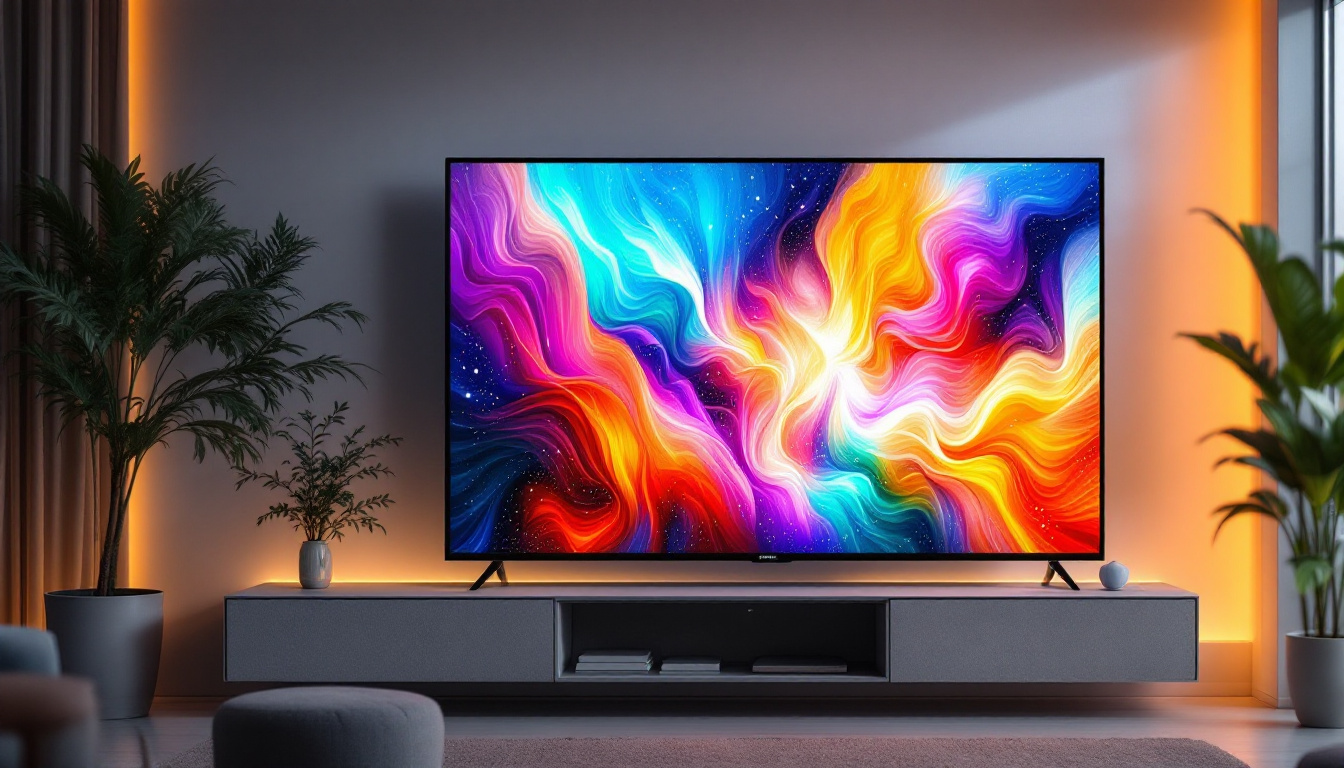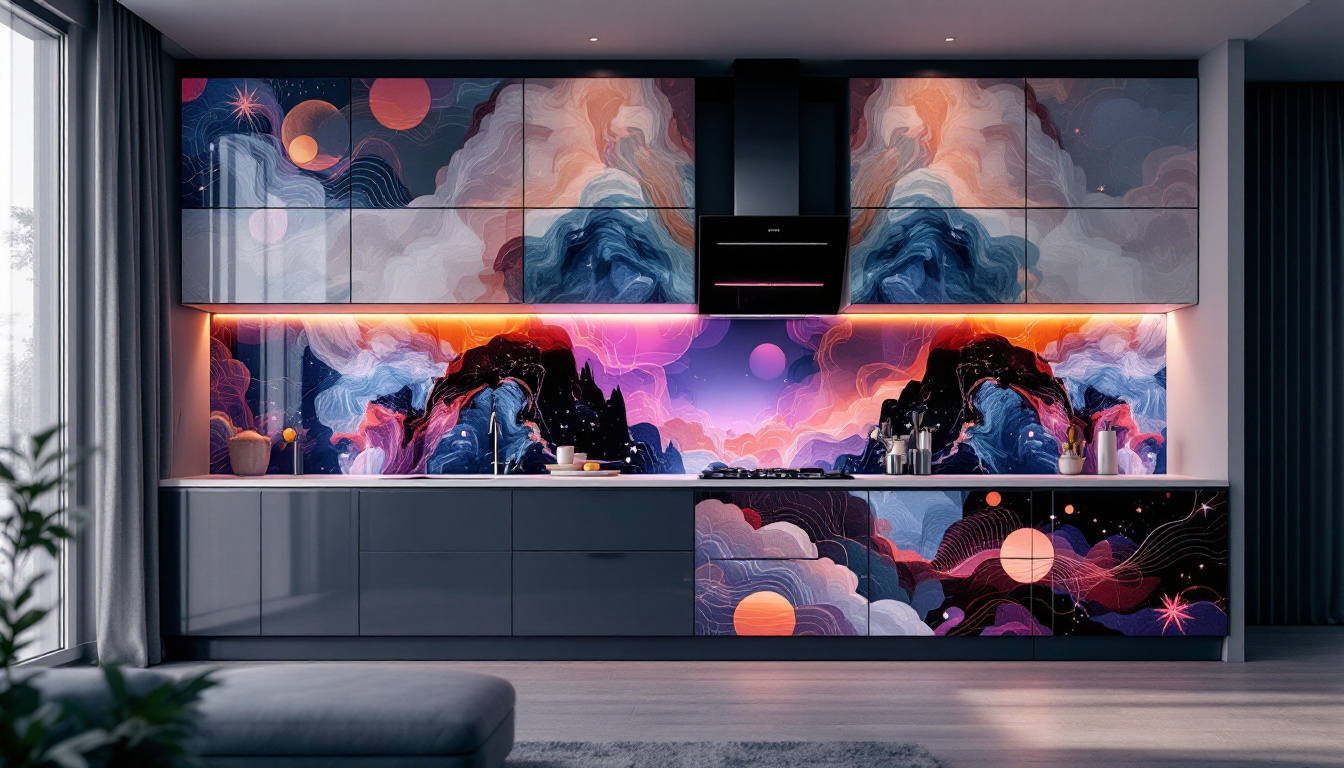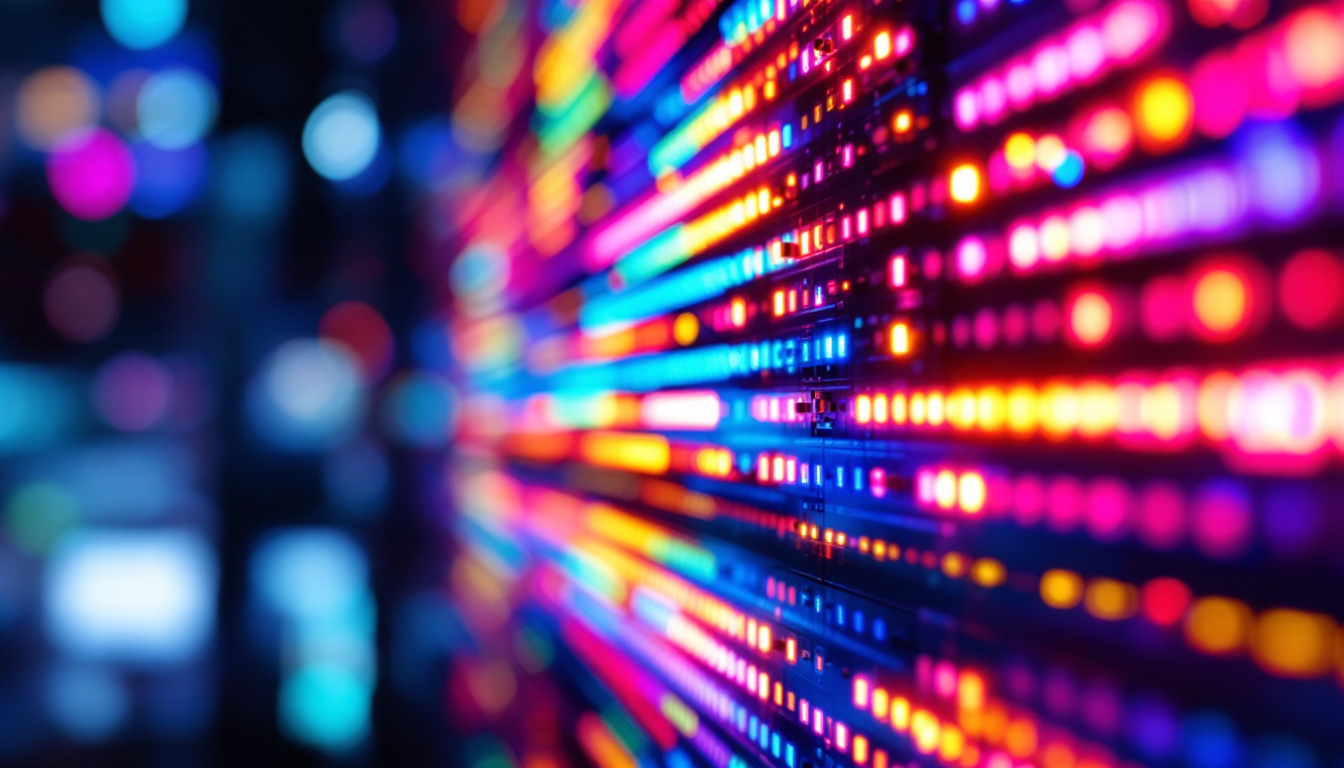In today’s fast-paced world, visual communication has become increasingly important. One of the most effective ways to convey messages to large audiences is through LED displays. These vibrant, eye-catching signs are not only versatile but also highly effective in capturing attention. This article delves into the intricacies of LED displays, exploring their technology, applications, and benefits.
Understanding LED Technology
Light Emitting Diodes (LEDs) are semiconductor devices that emit light when an electric current passes through them. This technology has revolutionized the way we display information, providing brighter, more energy-efficient alternatives to traditional lighting. The advent of LEDs has not only transformed the lighting industry but has also paved the way for advancements in various fields, including automotive lighting, medical devices, and even horticulture, where specific wavelengths of light are used to enhance plant growth.
The Basics of LED Functionality
At its core, an LED is made up of a chip of semiconducting material that emits light when energized. The color of the light depends on the materials used in the semiconductor. For instance, gallium nitride produces blue light, while gallium phosphide emits green. By combining different colored LEDs, displays can produce a full spectrum of colors, enabling the creation of dynamic images and videos. This versatility in color production is not just limited to displays; it also plays a crucial role in creating mood lighting and enhancing the ambiance in various settings, from homes to commercial spaces.
When multiple LEDs are arranged in a grid, they form a pixelated display. Each pixel can be individually controlled, allowing for the display of complex graphics and animations. This capability is what makes LED technology so appealing for large-scale signage. Moreover, the rapid response time of LEDs means that they can change colors and patterns almost instantaneously, making them ideal for applications like digital billboards and live event displays where real-time information is crucial.
Types of LED Displays
LED displays come in various types, each suited for different applications. The most common types include:
- Indoor LED Displays: These are designed for use in controlled environments, such as shopping malls, conference centers, and theaters. They typically have a higher pixel density, resulting in sharper images and text. Additionally, indoor displays often utilize advanced technologies such as high dynamic range (HDR) to enhance color accuracy and contrast, making them perfect for presentations and advertising.
- Outdoor LED Displays: Built to withstand the elements, outdoor displays are brighter and more durable. They are often used for billboards, sports arenas, and public announcements. These displays are engineered to resist weather conditions, including rain, snow, and extreme temperatures, ensuring that messages are visible even in direct sunlight.
- Flexible LED Displays: These innovative displays can be bent and shaped, allowing for creative installations in unique spaces. They are often used in artistic applications or unconventional advertising formats. The flexibility of these displays opens up new avenues for creativity, enabling designers to create immersive environments that engage viewers in novel ways.
Applications of LED Displays
The versatility of LED displays makes them suitable for a wide range of applications. From advertising to information dissemination, their uses are virtually limitless.
Advertising and Marketing
One of the most prominent applications of LED displays is in advertising. Businesses utilize these signs to promote their products and services, often in high-traffic areas where visibility is crucial. The dynamic nature of LED displays allows for changing messages, which can be updated in real-time to reflect promotions or events.
Moreover, the bright colors and motion graphics can significantly enhance brand visibility, drawing in potential customers more effectively than static signs. This adaptability is particularly beneficial for businesses that frequently change their marketing strategies.
Information Dissemination
LED displays are also widely used for informational purposes. public transportation systems, for instance, employ LED signs to provide real-time updates on schedules and delays. Similarly, educational institutions use LED displays to share announcements and event information with students and faculty.
In emergency situations, LED displays can be critical for conveying urgent messages, such as weather alerts or safety instructions. Their visibility and ability to convey information quickly make them an essential tool in crisis communication.
Entertainment and Events
In the entertainment industry, LED displays play a vital role in enhancing the viewer experience. Concerts, sporting events, and festivals often feature large LED screens that display live feeds, graphics, and advertisements. These displays can create an immersive atmosphere, engaging audiences and enhancing their overall experience.
Furthermore, LED technology is frequently used in stage productions, allowing for dynamic backdrops and lighting effects that can be tailored to each performance.
Benefits of LED Displays
The advantages of using LED displays extend beyond mere aesthetics. Their numerous benefits make them a preferred choice for many applications.
Energy Efficiency
One of the most significant benefits of LED technology is its energy efficiency. Compared to traditional lighting solutions, LEDs consume significantly less power, which can lead to substantial cost savings over time. This efficiency is particularly important for businesses that operate large displays continuously.
Additionally, the longevity of LED lights—often lasting tens of thousands of hours—means less frequent replacements and reduced maintenance costs. This durability makes them a wise investment for any organization.
High Visibility and Brightness
LED displays are renowned for their brightness and visibility, even in direct sunlight. This characteristic makes them ideal for outdoor applications where visibility is paramount. The ability to produce vibrant colors and high contrast ratios ensures that messages remain clear and eye-catching, regardless of environmental conditions.
Moreover, the flexibility in brightness settings allows for adjustments based on the time of day or surrounding light conditions, ensuring optimal visibility at all times.
Customizability and Versatility
LED displays offer unparalleled customizability. Businesses can tailor their displays to fit specific needs, whether it’s a simple text message or a complex video presentation. This versatility extends to the size and shape of the displays, allowing for unique installations that can fit any space.
Furthermore, the content displayed can be easily updated, enabling organizations to respond quickly to changing circumstances or promotional needs. This adaptability is a significant advantage in today’s fast-paced market.
Challenges and Considerations
Despite their many benefits, there are challenges associated with LED displays that potential users should consider.
Initial Investment Costs
While LED displays can lead to long-term savings, the initial investment can be substantial. High-quality displays, especially those designed for outdoor use, can be expensive. Organizations must weigh the upfront costs against the potential return on investment.
Additionally, ongoing maintenance and operational costs, while generally lower than traditional signage, should also be factored into the overall budget. A comprehensive cost analysis can help organizations make informed decisions.
Content Management
Managing content on LED displays requires careful planning and execution. Organizations need to ensure that their messages are clear, engaging, and relevant to their target audience. This often involves employing skilled personnel or utilizing specialized software for content creation and scheduling.
Furthermore, the speed at which content can be updated can lead to challenges in maintaining consistency and quality. A well-thought-out content strategy is essential for maximizing the effectiveness of LED displays.
Regulatory Compliance
In many regions, there are regulations governing the use of electronic signage, particularly for outdoor displays. These regulations may dictate brightness levels, operational hours, and placement. Organizations must familiarize themselves with local laws to ensure compliance and avoid potential fines.
Understanding these regulations is crucial for successful implementation and can help prevent costly legal issues down the line.
Future Trends in LED Display Technology
The LED display industry is continually evolving, with advancements in technology paving the way for new possibilities. Several trends are emerging that are likely to shape the future of LED displays.
Smart LED Displays
As technology advances, the integration of smart features into LED displays is becoming more common. Smart LED displays can connect to the internet, allowing for remote content management and real-time updates. This connectivity can enhance the effectiveness of advertising campaigns and information dissemination.
Additionally, smart displays can utilize data analytics to tailor content based on audience behavior, ensuring that messages are relevant and impactful.
Increased Resolution and Clarity
As demand for high-quality visuals continues to grow, manufacturers are focusing on increasing the resolution of LED displays. Higher pixel densities will enable sharper images and more detailed graphics, enhancing the viewer experience.
This trend is particularly important for applications where clarity is crucial, such as in medical facilities or high-end retail environments.
Environmental Considerations
With growing awareness of environmental issues, there is an increasing push for sustainable practices within the LED display industry. Manufacturers are exploring eco-friendly materials and energy-efficient technologies to reduce the environmental impact of production and operation.
Additionally, recycling programs for old LED displays are becoming more common, promoting responsible disposal and reducing electronic waste.
Conclusion
LED displays have transformed the landscape of visual communication, offering dynamic, energy-efficient, and customizable solutions for a myriad of applications. Their ability to capture attention and convey messages effectively makes them an invaluable tool for businesses, organizations, and events.
While there are challenges to consider, the benefits of LED technology far outweigh the drawbacks. As the industry continues to evolve, embracing new trends and innovations will be crucial for maximizing the potential of LED displays.
In a world where capturing attention is more important than ever, investing in a big LED sign could be the key to standing out in a crowded marketplace.
Illuminate Your Message with LumenMatrix
Ready to elevate your visual communication and stand out with unparalleled clarity? Discover LumenMatrix’s comprehensive range of LED display solutions, from vibrant Indoor and Outdoor LED Wall Displays to innovative Custom and All-in-One LED Displays. Each product is crafted with the mission to revolutionize your engagement and captivate your audience. Don’t let your message fade into the background. Check out LumenMatrix LED Display Solutions today and transform the way you share your message with the world.

